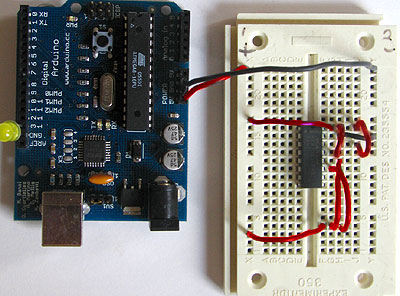
Arduino Uno Kak Programmator
There are plenty of interesting Arduino projects that use IR communication too. With a simple IR transmitter and receiver, you can make remote controlled robots, distance sensors, heart rate monitors, DSLR camera remote controls, TV remote controls, and lots more. In this tutorial I’ll first explain what infrared is and how it works. Then I’ll show you how to set up an on an.
If you’re still in two minds about arduino programmator and are thinking about choosing a similar product, AliExpress is a great place to compare prices and sellers. We’ll help you to work out whether it’s worth paying extra for a high-end version or whether you’re getting just as good a. Arduino Uno – Setup and Programming Tutorials Interface almost anything; the best choice for beginners – this is the Arduino UNO board. Using an ATmega328 microcontroller and 14 I/O pins, Arduino UNO is one of the most popular development boards in robotics and electronics as well.
No prescription deltasone 10mg fedex order deltasone 40mg saturday shipping. 
Free download software frontier 41. Value front41WriteInput writes an instruction file, a data file, and a start-up file for Frontier 4.1 to disk and it invisibly returns a list of class front41WriteInput. This version is is available as (FORTRAN) source code and (executable) binaries for GNU/Linux and MS-Windows. This list contains mainly the arguments with which front41WriteInput was called. An exception is element data, which is not the argument data but the data matrix that was written into the data file. Furthermore, in case of an Efficiency Effects Model, the element eta contains the number of Z variables.
I’ll also show you how to use virtually any IR remote (like the one for your TV) to control things connected to the Arduino. Now let’s get into the details What is Infrared? Infrared radiation is a form of light similar to the light we see all around us. The only difference between IR light and visible light is the frequency and wavelength. Infrared radiation lies outside the range of visible light, so humans can’t see it: Because IR is a type of light, IR communication requires a direct line of sight from the receiver to the transmitter. It can’t transmit through walls or other materials like WiFi or Bluetooth.
How IR Remotes and Receivers Work A typical infrared communication system requires an IR transmitter and an IR receiver. The transmitter looks just like a standard LED, except it produces light in the IR spectrum instead of the visible spectrum. If you have a look at the front of a TV remote, you’ll see the IR transmitter LED: The same type of LED is used in IR transmitter breakout boards for the Arduino. You can see it at the front of this Keyes IR transmitter: The IR receiver is a and pre-amplifier that converts the IR light into an electrical signal. Typically look like this: Some may come on a breakout board like this. IR Signal Modulation IR light is emitted by the sun, light bulbs, and anything else that produces heat. That means there is a lot of IR light noise all around us. To prevent this noise from interfering with the IR signal, a signal modulation technique is used.
In IR signal modulation, an encoder on the IR remote converts a binary signal into a modulated electrical signal. This electrical signal is sent to the transmitting LED. The transmitting LED converts the modulated electrical signal into a modulated IR light signal. The IR receiver then demodulates the IR light signal and converts it back to binary before passing on the information to a microcontroller: The modulated IR signal is a series of IR light pulses switched on and off at a high frequency known as the carrier frequency. The carrier frequency used by most transmitters is 38 kHz, because it is rare in nature and thus can be distinguished from ambient noise.
This way the IR receiver will know that the 38 kHz signal was sent from the transmitter and not picked up from the surrounding environment. The receiver diode detects all frequencies of IR light, but it has a band-pass filter and only lets through IR at 38 kHz. It then amplifies the modulated signal with a pre-amplifier and converts it to a binary signal before sending it to a microcontroller. IR Transmission Protocols The pattern in which the modulated IR signal is converted to binary is defined by a transmission protocol. There are many IR transmission protocols. Sony, Matsushita, NEC, and RC5 are some of the more common protocols. The NEC protocol is also the most common type in Arduino projects, so I’ll use it as an example to show you how the receiver converts the modulated IR signal to a binary one.

Logical ‘1’ starts with a 562.5 µs long HIGH pulse of 38 kHz IR followed by a 1,687.5 µs long LOW pulse. Logical ‘0’ is transmitted with a 562.5 µs long HIGH pulse followed by a 562.5 µs long LOW pulse: This is how the NEC protocol encodes and decodes the binary data into a modulated signal. Other protocols differ only in the duration of the individual HIGH and LOW pulses. IR Codes Each time you press a button on the remote control, a unique hexadecimal code is generated. This is the information that is modulated and sent over IR to the receiver. In order to decipher which key is pressed, the receiving microcontroller needs to know which code corresponds to each key on the remote.
Different remotes send different codes for the keypresses, so you’ll need to determine the code generated for each key on your particular remote. If you can find the datasheet, the IR key codes should be listed.